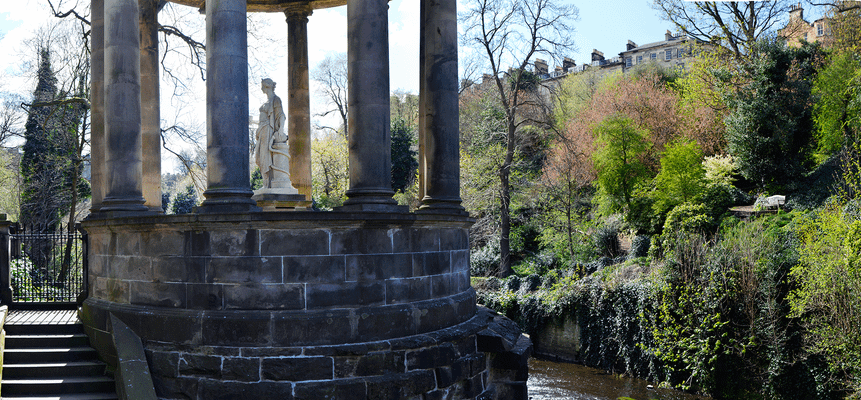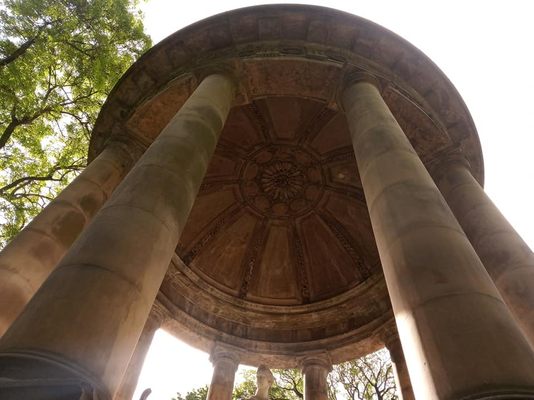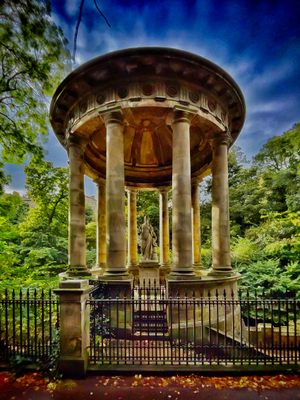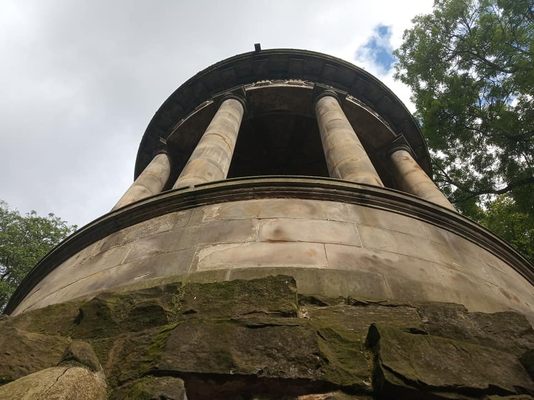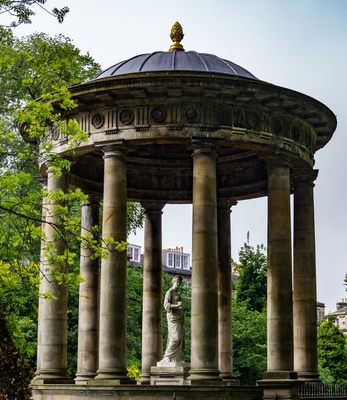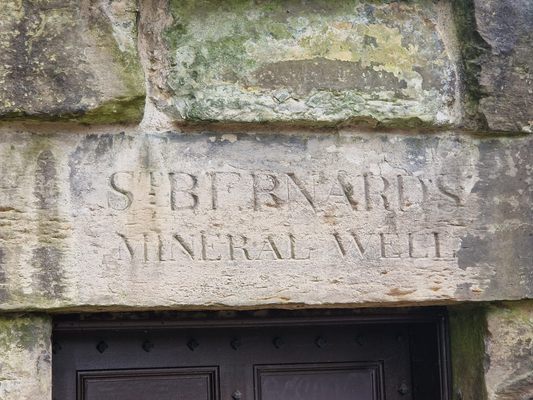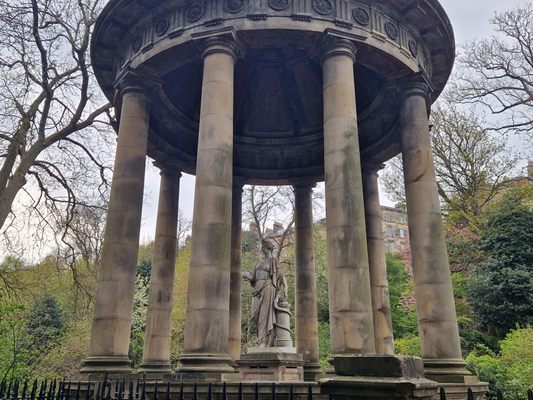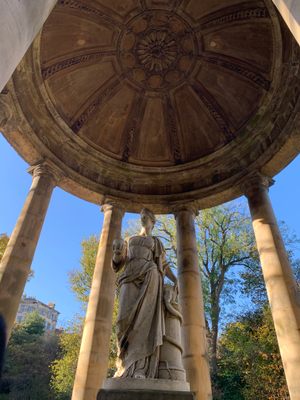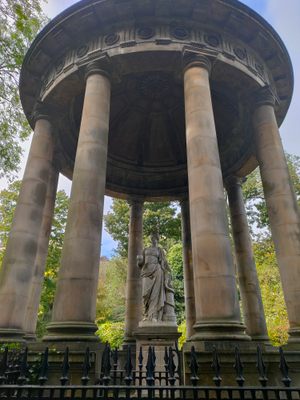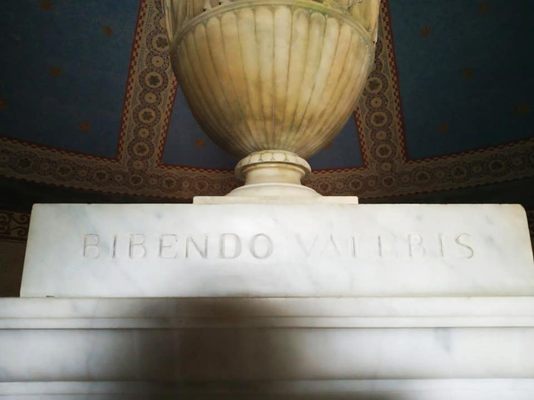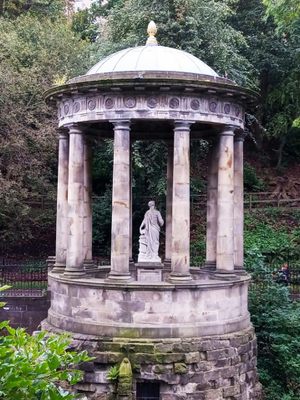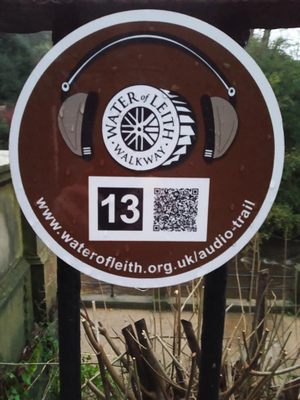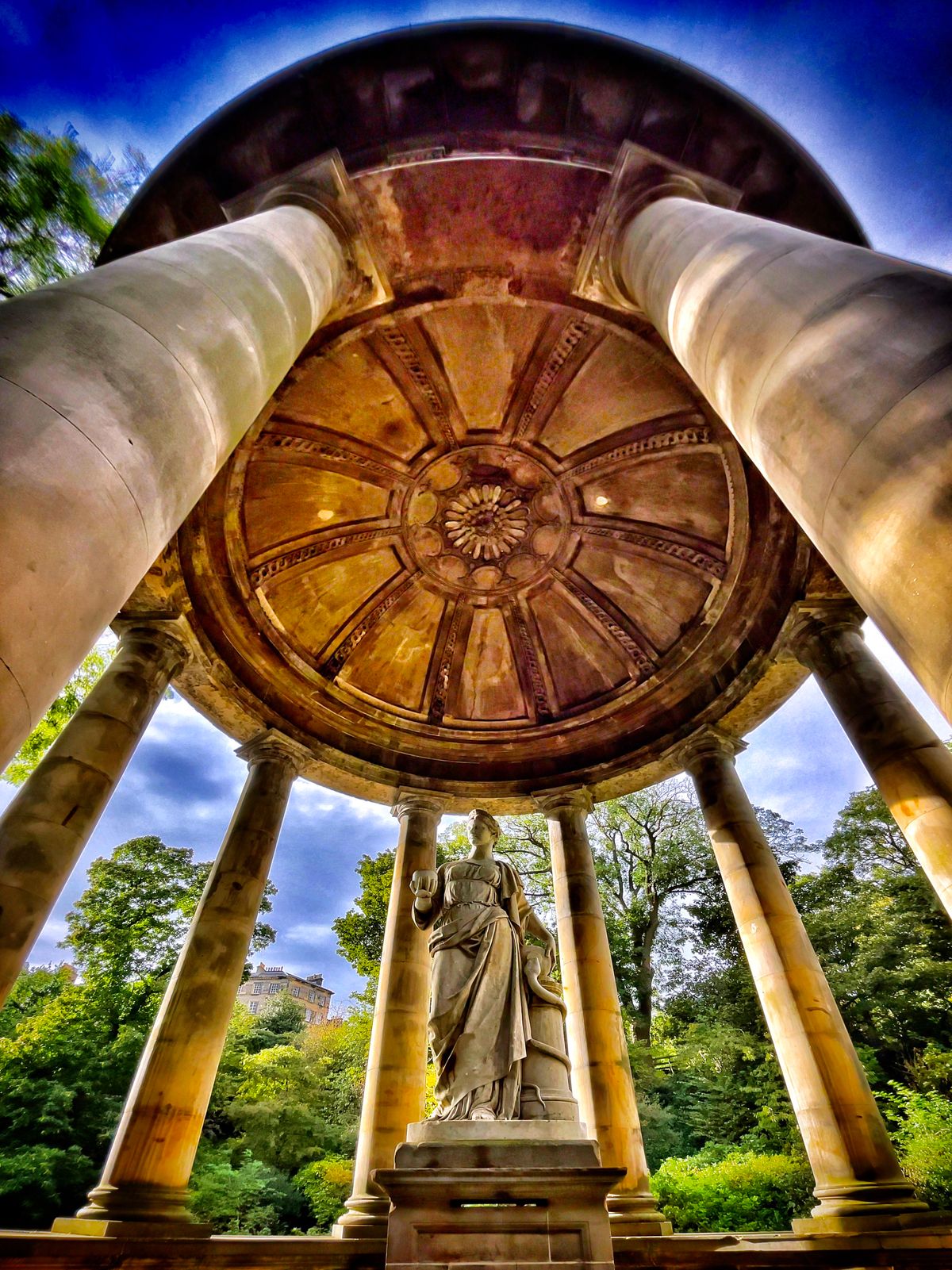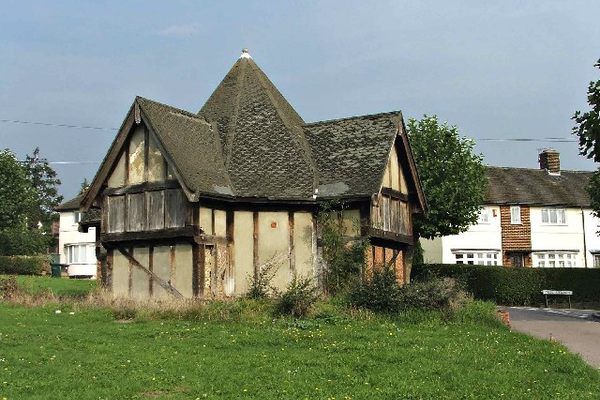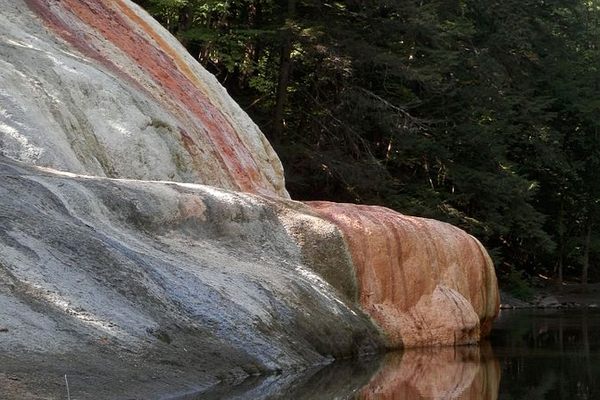About
Situated on the banks of the Water of Leith on the edge of Edinburgh stands an 18th-century structure so beautiful it's almost hard to believe it was built for a well. Legend states it was discovered by a group of schoolboys who were out fishing sometime around 1760. But this became no ordinary well. In the latter part of the 18th century, locals believed the waters of this natural spring had medicinal healing properties.
In 1789 the well was purchased by Lord Gardenstone. Mr. Gardenstone was a staunch anti-slavery campaigner. He spearheaded the city's Committee for Abolition of the Slave Trade. In 1778, he was a central figure in a landmark case that oversaw the overturning of the subjugation of a slave named Joseph Knight, thus providing for his freedom and paving the way for the county's eradication of human bondage.
The ornate structure, designed by Scottish painter Alexander Nasmyth in 1789, displays how the city had embraced the Scottish Enlightenment. The building takes the style of a Greco-Roman temple, complete with Doric columns, a dome topped with a golden pineapple, and a statue of Hygieia, the Greek and Roman goddess of health. Over the doorway is the inscription "Bibendo Valeris", meaning ; drink and you will be well.
For nearly two centuries, people came to St. Bernard's Well for what they called "taking the waters." They believed the mineral-rich spring water could cure a variety of ailments, including muscle pain, arthritis, and even blindness. The well gets its name from a saintly monk from the 12th century, named St. Bernard of Clairvaux, who is said to have lived in a cave nearby. It was eventually closed in the 1940s because the water contained arsenic and other impurities.
The interior of this impressive structure can still be explored today, though it's only open to the public on certain days of the year. Inside, you'll find a room with a decorative mosaic ceiling suggestive of a Roman temple. The room contains a pump adorned with a Grecian vase and a fireplace equipped with plumbing to dispense hot water.
The well is said to have connections with Mary Wollstonecraft Shelley and her novel "Frankenstein". In chapter 19 of the narrative, the character of Dr. Victor Frankenstein is describing the various attributes of Edinburgh: “The beauty and regularity of the new town of Edinburgh, its romantic castle and its environs, the most delightful in the world, Arthur’s Seat, St Bernard’s Well, and the Pentland Hills... filled him with cheerfulness and admiration.”
Related Tags
Know Before You Go
The well is located just down from Dean Village and before the community of Stockbridge. The exterior is visible at any time and can be seen from the Water of Leith walkway. The interior, tiled room is only open at certain times of the year, usually during the Edinburgh Arts Festival in August and Open Door Days on the last weekend of September. Dean Village Association makes access available on the first Sunday of the month from April to August.
Flavors of Scotland: Beyond the Haggis
Smoked seafood, single malt whisky, and warm hospitality.
Book NowCommunity Contributors
Added By
Published
September 10, 2019

